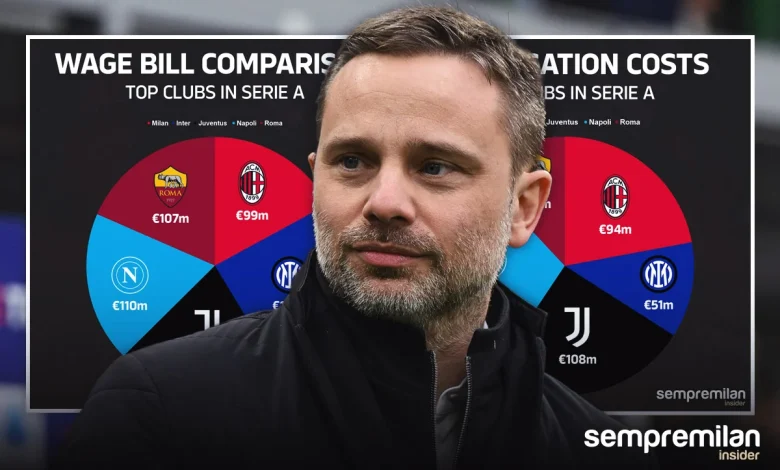Wage bill, amortisation and top earners: How Milan compare with their rivals

Eleven games into the season, and with the third international break underway, the time has come to look at some salary figures in Serie A. Which team has the heftiest wage bill? Which players earn the most in each of the top clubs?
As you may have figured out already, AC Milan don’t exactly come out on top here, though you could argue there is a semi-reasonable explanation for it.
I mentioned a few weeks back that I would take a closer look at the player costs once the financial statements for 2024-25 had been confirmed. The truth is that I could have done an article even without those statements, as the wage bills for all Serie A clubs were more or less confirmed at the start of September.
It’s not as fun to do this article at the start of the season, though, as you don’t have a proper league table to look at simultaneously. I guess you could say that my delay was very much intentional, above all since it helps us draw some conclusions from the different wage bills and the performances so far this season.
In addition to the wage bill of Milan, Inter, Juventus, Napoli and Roma, I will also take a look at the amortisation costs – which are just as important – and the top five earners for each club. Then, I will share some thoughts on where the Rossoneri stand with their strategy, all things considered.
Note: I haven’t added a short version for this one, since everything revolves around infographics that are quick to consume if you’re in a time crunch.
Wage bills and amortisation compared
First of all, just to get an overview of the situation, we need to take a look at the overall wage bill of each club. While there are some caveats to note, which I will get to with the amortisation costs, comparing the wage bills is a good way to see which clubs invest a lot in their players. Or at the very least, it tells of whether the club is willing to spend a pretty penny to retain/entice stars.
As you can see in the image below, Milan are pretty far behind their rivals with €99m in annual player wages, which is €42m less than Inter. At face value, it looks like a dramatic difference, but the truth is that the Nerazzurri have always been more inclined to grant hefty contracts.
Furthermore, the Rossoneri intentionally thinned out their squad this season due to the lack of European competitions.
Adding just two or three players, which probably would have been the case with European football, would have made a significant difference for Milan. It definitely would have brought them up to Roma and Napoli levels, but whether you agree with the squad-thinning strategy or not is a different question. That said, the amortisation costs put the Rossoneri in a different light.
As you can see below, Milan have annual amortisation costs of about €94m, which is a whole lot more than Inter at €51m. It makes up for the difference on the wage bill front, so the argument that the Nerazzurri invest more in their squad isn’t valid. They just do it differently than the Rossoneri. It’s also interesting to note that both Juventus and Napoli have quite high amortisation costs.
If we combine the wage bill and amortisation costs, none of the Milanese sides come out on top: 1) Napoli with €232m, 2) Juventus with €231m, 3) Milan at €193m, 4) Inter at €192m and 5) Roma at €158m.
The key takeaway here is that the Partenopei and the Bianconeri are under pressure to perform, while the Rossoneri have remained at a pretty high level despite having no European commitments. That could also be rephrased as the following: securing a top-four spot is crucial.
To read the rest of the article, which includes infographics on the top five earners of each club, head over to our Substack. You will also find the main takeaways of the squad costs there.





